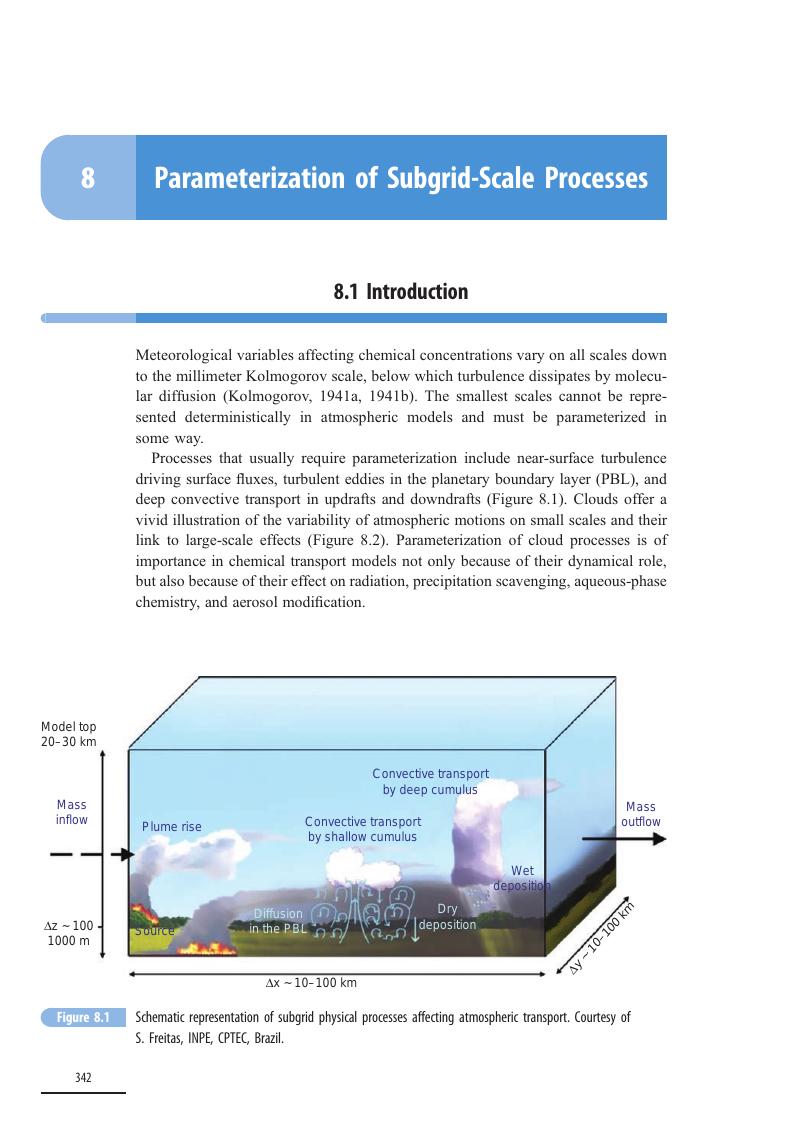Book contents
- Modeling of Atmospheric Chemistry
- Reviews
- Modeling of Atmospheric Chemistry
- Copyright page
- Contents
- Preface
- Symbols
- 1 The Concept of Model
- 2 Atmospheric Structure and Dynamics
- 3 Chemical Processes in the Atmosphere
- 4 Model Equations and Numerical Approaches
- 5 Formulations of Radiative, Chemical, and Aerosol Rates
- 6 Numerical Methods for Chemical Systems
- 7 Numerical Methods for Advection
- 8 Parameterization of Subgrid-Scale Processes
- 9 Surface Fluxes
- 10 Atmospheric Observations and Model Evaluation
- 11 Inverse Modeling for Atmospheric Chemistry
- Book part
- Further Reading
- Index
- References
8 - Parameterization of Subgrid-Scale Processes
Published online by Cambridge University Press: 15 May 2017
- Modeling of Atmospheric Chemistry
- Reviews
- Modeling of Atmospheric Chemistry
- Copyright page
- Contents
- Preface
- Symbols
- 1 The Concept of Model
- 2 Atmospheric Structure and Dynamics
- 3 Chemical Processes in the Atmosphere
- 4 Model Equations and Numerical Approaches
- 5 Formulations of Radiative, Chemical, and Aerosol Rates
- 6 Numerical Methods for Chemical Systems
- 7 Numerical Methods for Advection
- 8 Parameterization of Subgrid-Scale Processes
- 9 Surface Fluxes
- 10 Atmospheric Observations and Model Evaluation
- 11 Inverse Modeling for Atmospheric Chemistry
- Book part
- Further Reading
- Index
- References
Summary

- Type
- Chapter
- Information
- Modeling of Atmospheric Chemistry , pp. 342 - 398Publisher: Cambridge University PressPrint publication year: 2017

